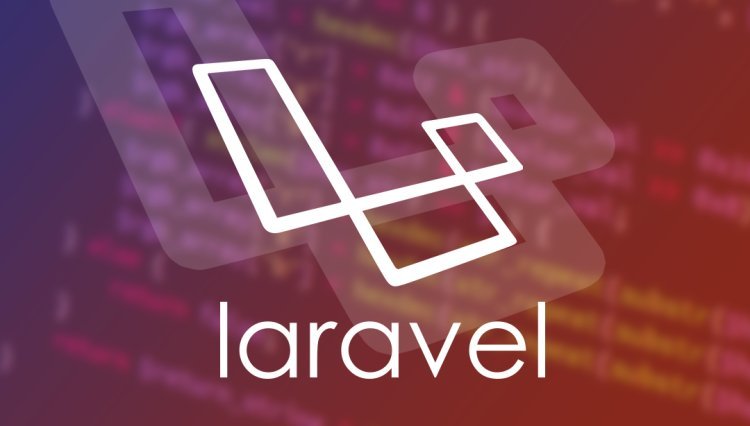Laravel Developer Roadmap: From Beginner to Expert
Laravel has become one of the most popular PHP frameworks due to its elegant syntax, robust features, and ease of use.

Introduction
Laravel has become one of the most popular PHP frameworks due to its elegant syntax, robust features, and ease of use. Whether you are a beginner or an experienced developer, mastering Laravel can significantly enhance your ability to build scalable web applications. This comprehensive guide will take you through the Laravel Developer Roadmap, helping you progress from a novice to an expert. Additionally, if you're looking to hire Laravel Developer, hire MLOps engineer, or hire remote AWS developers, you’ll find valuable insights on making the right choice.
Step 1: Understanding the Basics of PHP and OOP
Before diving into Laravel, it’s crucial to have a solid grasp of PHP and Object-Oriented Programming (OOP). Laravel is built on PHP, and understanding its core concepts will make your learning process much smoother.
Key Concepts to Learn:
-
PHP syntax, variables, and functions
-
Object-Oriented Programming (OOP) principles
-
Namespaces and autoloading
-
Composer and dependency management
Step 2: Setting Up Your Development Environment
To begin coding in Laravel, you need to set up a proper development environment. Here’s what you need:
Required Tools:
-
PHP (Latest Version): Laravel requires at least PHP 8.0 for optimal performance.
-
Composer: The dependency manager for PHP.
-
MySQL/PostgreSQL: For database management.
-
Laravel Installer: Use Composer to install Laravel globally.
-
VS Code/PHPStorm: Recommended IDEs for efficient coding.
-
XAMPP or Laravel Valet: For local development.
Step 3: Learning Laravel Fundamentals
Now that your environment is ready, start by understanding Laravel’s core functionalities.
Essential Laravel Concepts:
-
Routing: Learn how Laravel handles HTTP requests.
-
Middleware: Protect routes and filter requests.
-
Controllers and Views: Implement MVC architecture effectively.
-
Blade Template Engine: Build dynamic views with Blade.
-
Eloquent ORM: Interact with databases seamlessly.
Step 4: Building Your First Laravel Application
A great way to reinforce your learning is by building a small project. Try creating a CRUD application (Create, Read, Update, Delete) using Laravel.
Steps to Follow:
-
Create a new Laravel project using
composer create-project laravel/laravel myProject. -
Set up the database and configure
.envfile. -
Create models, migrations, and controllers.
-
Implement authentication using Laravel Breeze or Jetstream.
-
Use Eloquent ORM to interact with the database.
-
Implement basic API endpoints.
Step 5: Mastering Advanced Laravel Features
Once you’re comfortable with Laravel basics, move on to advanced concepts that make Laravel a powerful framework.
Important Features to Learn:
-
Queues and Jobs: Handle background processes efficiently.
-
Event Broadcasting: Real-time data updates with WebSockets.
-
Task Scheduling: Automate repetitive tasks using Laravel’s scheduler.
-
Laravel Sanctum & Passport: Secure API authentication.
-
Service Containers & Providers: Manage dependencies effectively.
Step 6: Exploring Laravel Ecosystem and Tools
Laravel offers a rich ecosystem of tools that streamline development.
Popular Laravel Tools:
-
Laravel Nova: Admin panel for Laravel applications.
-
Laravel Horizon: Queue monitoring and management.
-
Laravel Telescope: Debugging tool for Laravel applications.
-
Laravel Forge & Envoyer: Deploy Laravel applications effortlessly.
-
Laravel Vapor: Serverless deployment on AWS.
Step 7: Version Control and CI/CD Implementation
A professional Laravel developer must understand version control and CI/CD pipelines.
Best Practices:
-
Use Git for version control and follow Git workflows like GitFlow.
-
Implement Continuous Integration/Continuous Deployment (CI/CD) using GitHub Actions, GitLab CI/CD, or Jenkins.
-
Use Docker for containerized Laravel applications.
Step 8: Performance Optimization and Security
Optimizing your Laravel application is crucial for scalability and security.
Optimization Tips:
-
Enable caching (route caching, query caching, and config caching).
-
Optimize database queries using indexes and eager loading.
-
Implement queue workers to handle time-consuming tasks asynchronously.
-
Minimize package dependencies to reduce application bloat.
-
Use Redis or Memcached for efficient data caching.
Security Best Practices:
-
Always validate user input to prevent SQL injection.
-
Use CSRF tokens to protect forms from cross-site request forgery attacks.
-
Encrypt sensitive data using Laravel’s built-in encryption services.
-
Implement role-based access control (RBAC) for better security.
Step 9: Contributing to the Laravel Community
One of the best ways to improve as a Laravel developer is by contributing to the Laravel community.
Ways to Contribute:
-
Participate in open-source Laravel projects on GitHub.
-
Write Laravel tutorials and share knowledge on platforms like Medium or Dev.to.
-
Join Laravel forums, Discord groups, and conferences.
Step 10: Becoming a Full-Stack Laravel Developer
To become an expert, consider expanding your knowledge beyond Laravel and mastering full-stack development.
Additional Skills to Learn:
-
Frontend Development: Learn Vue.js, React, or Alpine.js for building dynamic UIs.
-
DevOps & Cloud Computing: Master AWS, Docker, and Kubernetes.
-
MLOps: If you're interested in hiring an MLOps engineer, understanding machine learning deployment can be valuable.
-
Remote Development: If you’re looking to hire remote AWS developers, understanding distributed team management is beneficial.
Conclusion
By following this Laravel Developer Roadmap, you’ll transition from a beginner to an expert in no time. Laravel is a powerful and flexible framework that allows you to build scalable applications efficiently. Whether you want to hire Laravel Developer, hire MLOps engineer, or hire remote AWS developers, having the right skills will ensure your projects succeed.
What's Your Reaction?















